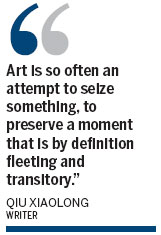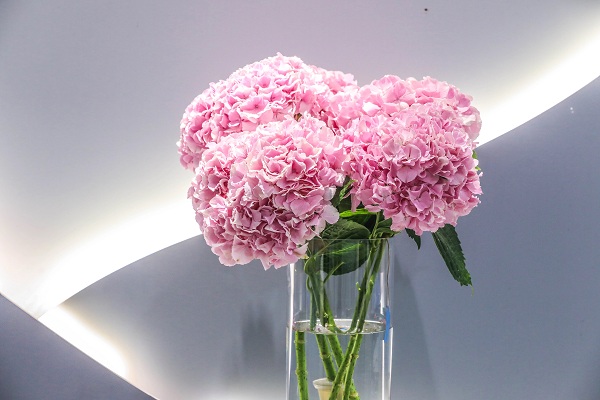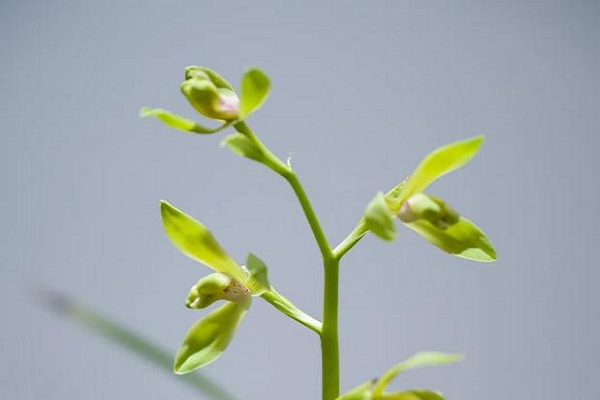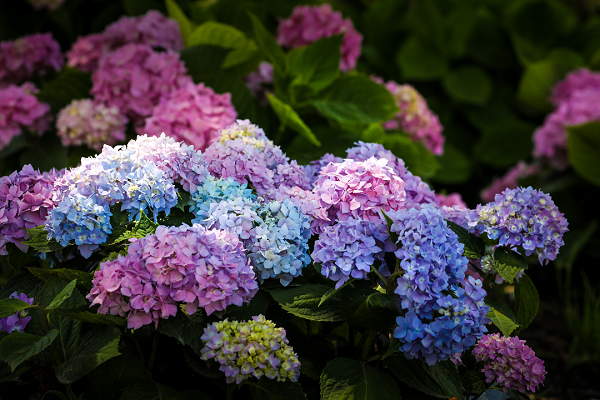|
Journalist Howard French and novelist Qiu Xiaolong collaborated on a book of photos and poetry about ordinary residents of Shanghai. Provided to China Daily |
Soon after starting his job as the New York Times' Shanghai bureau chief in 2003, Howard French enrolled in an intensive-Mandarin course. Eight hours a day of grueling study left him exhausted and feeling disconnected from his new home.
So the journalist began wandering the city on weekends with a 1956 Rolleiflex camera - a German model distinctive for its twin lenses. He quickly discovered neighborhoods that bore no resemblance to the shiny skyscrapers of Shanghai's newer neighborhoods. The fruit of those afternoon outings, collected over five years, are presented in Disappearing Shanghai, a collaboration between French and US-based Chinese writer Qiu Xiaolong.
Qiu, author of the popular Inspector Chen novels in English, wrote over 30 poems and essays inspired by French's images. Culling about 90 photos from a trove of 10,000, the book serves as a gorgeous document of a rapidly changing mega city.
"As I discovered these self-contained little worlds that were completely different from the popular image of Shanghai, momentum took hold and I became engrossed," French told China Daily. "It occurred to me that I was amassing material that was of historical interest, and of a special moment in the life of the city as these areas were quickly disappearing.
"I felt that with time and attention and sufficient patience, I could do something very special there."

French and Qiu met at a reading series at M on the Bund, a fine-dining restaurant that hosts the annual Shanghai International Literary Festival. The American reporter was drawn to Qiu's own relationship with the city, which served as a backdrop to the Inspector Chen novel When Red Is Black.
Qiu immediately connected with the photographs, which reminded him of the neighborhoods of his youth.
"For me, this is not a book about old lanes and houses and architecture," he told China Daily. "It's a book about a disappearing lifestyle. Even though I know objectively that the modern housing complexes of today are materially better, people's relationships and the way they interact with each other as a result of these changes make me feel very conflicted.
"All we can do is present these images in hopes that people will know that, once upon a time, this thing was here. I tried not to put too much of myself into these poems."
Instead, Qiu draws on the perspective of his famous fictional detective, in essays that feature the character's observations on French's scenes.
"Now that I live in the US, my perspective may be more similar to Howard's perspective as a foreigner," he said. "I wanted to present the contrasting perspective of a fully Chinese person, through Inspector Chen's views."
The written pieces, Qiu explained, attempt to emulate Ming Dynasty-era "painting in poetry, and poetry in painting". He was inspired by a book of poetry from the era, about Tang Dynasty paintings. In the Chinese artistic sensibility, he said, cross-genre pollination done well is a high achievement.
Qiu attempts the same in several poems in Disappearing Shanghai, writing about French's pictures in the style of ancient Chinese poets.
"It was important to me that the past and the present, the East and the West, all came together in this moment. And for me, Howard's photos are not just pictures. They really spoke to me through the details. I was inspired and moved, so I wanted to experiment in this way.
"Some of his images really haunted me, and I let my imagination carry me away."
Paired with a photo of a bicycle mechanic lazily reading a newspaper, Qiu writes: "What's happening in the world happens only in the words / A city of bikes once, it is lost, he reads, to cars."
In a postscript to the book, Qiu says French's efforts to preserve memories of old Shanghai are "quixotic," a description French considers inherent in any artistic endeavor.
"Art is so often an attempt to seize something, to preserve a moment that is by definition fleeting and transitory. I especially felt this way with this project, because these neighborhoods were being demolished at such a rapid pace."
What sets his work apart is the process in which he approached the material, said French, who has since left the Times and now teaches journalism at Columbia University.
"I don't define my work as photojournalism, because photojournalism is immediate and assignment-driven, and usually the result of a quick take on something," he said. "I'm interested in a quiet process of studying people, in portraiture and documentary work. I'm trying to produce something revealing about someone's character and identity, and that's very different from what I think of as photojournalism.
"During this process I discovered a particular world, and it jumped out at me as being a kind of time capsule. I was returning week after week, for five years. I planted myself there, observing with a long-term view that is unusual, I think. I'm not trying to romanticize or de-romanticize Shanghai. It's about a human landscape, and a human environment."
Although French never spent more than a day with any subject, his chats with people often led to his being invited into their homes. Many of the photos in the book are of families and individuals in their most private spaces.
A common pitfall among people trying to document China's transformation is the use of what French calls "statistical dazzle in place of a real insider's analysis about what contemporary China is doing or where it's going".
"So much of what has been written about China over the last 20 years has been hype-driven, with people throwing big numbers around. There's a crutch in that approach that prevents people from digging more deeply about what Chinese people are actually experiencing in their lives.
"It also prevents people from experiencing what I think is a necessity of really understanding something - to deal with real people, at close quarters."
kdawson@chinadailyusa.com


